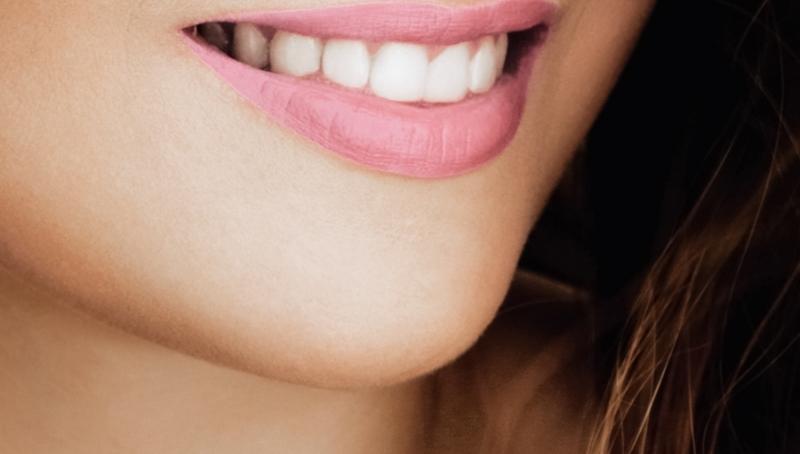Startseite » Are ceramic veneers the best choice for your teeth?

You want prettier teeth?
Request an appointment now and learn more about treatment with veneers.
Are ceramic veneers the best choice for your teeth?
You would like to have veneers, but are still wondering which type is right for you? Many patients choose Ceramic Veneers. But why is that? In this article, we’ll go over why porcelain veneers might be the best option for you and your teeth.

Table of contents
What are ceramic veneers and what are they used for?
Ceramic veneers or conventional veneers are wafer-thin veneers that are applied to your teeth in a minimally invasive treatment method. They are used to correct discolored, damaged or uneven teeth. Among other things, it is possible to aesthetically improve a single tooth, an existing gap or even the entire set of teeth into a complete work of art. This ensures a beautiful and natural smile.
In this procedure, the outer layer (0.3 – 1.0 mm) is removed from the enamel and replaced with a new one that is precisely adapted to the tooth. Your dentist will discuss the procedure with you in detail and explain all the individual steps. This way, you as a patient can inform yourself in advance and make the best decision for you.
The variety of ceramic materials is large and growing with the introduction of CAD/CAM-based manufacturing. It’s not easy to keep track of things here, but ultimately it boils down to the fact that the Dentist in consultation with the patient – usually after advice from the laboratory – can choose between different types of restorations that best meet the requirements and, at the same time, the Budget not burst.
In recent years, more and more people are opting against partial crowns or bridges and instead opting for a full enamel replacement, as it is hypoallergenic and made only from natural ingredients whenever possible.
Ceramic veneers are made of “full ceramic”. These include oxide ceramics, silicate ceramics, glass ceramics and feldspar ceramics, which belong to the all-ceramic families. Crystals are integrated into the glass phase, which control the aesthetic properties and stability of the ceramic. The higher the crystal content (minimal to no glass phase), the more stable the ceramic. However, this also comes at the expense of esthetics: higher strength leads to lower translucency.

Cost of ceramic veneers
While the price of a ceramic veneer is €1,500, this would be a total price of €12000 for eight additional teeth. At Inno Esthetics you will receive an individual price agreement, so if you have 20 teeth, the price can be lower for a single tooth. Via one Financing or Installment payment you can inform yourself at Inno Esthetics inform yourself.
innoEsthetics specializes in the application of veneers.
We use only high quality ceramics from German laboratories, so we guarantee a natural and long-lasting result. You can get all the important information about the treatment in our consultation video.
What other types of veneers are there?
In addition to ceramic veneers, there are different types of veneers, depending on the treatment method, thickness and material:
- Conventional veneers
- Non-prep veneers
- Lumineers
- Plastic or composite veneers
- Veneers-to-Go
Conventional veneers are made of all-ceramic and are 1 mm thin. The veneers are individually adapted to the tooth in a dental laboratory using a special procedure based on a dental impression. The Color and thickness are precisely matched by the technician to the other teeth. This makes the veneer look very natural.
Non-prep veneers are an alternative to conventional Veneers
which do not require the removal of tooth structure. Instead, non-prep veneers are bonded directly to the surface of the teeth.
Lumineers are only 0.3mm to Veneers are only 0.3 to 0.6 mm thin. Lumineers are a registered trademark from the USA and may only be applied by specially licensed
Dentists be applied. Due to the delivery from the USA, the production takes much longer than the production in Germany.
Plastic or composite veneers, as the name suggests, are made of plastic. After the patient has chosen conventional or non-prep veneers, it takes a while for the dental laboratory to fabricate the individual veneers. Therefore, the composite v eneers serve as a temporary restoration until the final Veneers can be applied.
Veneers-to-Go are made of a resin-ceramic mixture or ceramic. This type of veneer is particularly suitable for the anterior region. You already get them when you visit the dentist. An impression is not required for this, because the dentist uses standardized veneers that can be applied directly to the teeth.
What advantages do ceramic veneers offer over other materials / types?
Ceramics have been used for teeth for a long time and there are many arguments in favor of using them. Ceramics are known for good tolerance and better oral hygiene. Unlike plastic, hardly any plaque forms on the smooth ceramic surface. Heat and cold are transmitted more weakly compared to other materials. Ceramic products have a high aesthetics
and are individual manufactured.
The material is also biocompatible and not prone to disclosure symptoms such as metal allergies. Ceramic veneers are therefore a good alternative for patients who expect esthetically demanding results and at the same time value a compatible solution. This type of veneers is made and Dentists made and inserted. Therefore it offers a optimal result in terms of aesthetics and compatibility.
The advantages lie primarily in the durability of the material. Ceramic is hard, abrasion-resistant, resistant to acids and has excellent tissue compatibility. In dentistry, ceramic materials are used for the fabrication of veneers, inlays, crowns and bridges as well as for the veneering of metal frameworks.
How are ceramic veneers made?
Purely ceramic materials are predominantly used for veneers and inlays. Three processing paths can be distinguished.
Sintered (fired ceramic):
In the dental laboratory, the ceramic material is applied to a heat-resistant model of the prepared tooth and fired in several layers. In this process, the tooth is built up layer by layer.
Cast or pressed ceramic:
Glass-ceramic bodies are castable. Similar to gold casting fillings, a wax blank is first produced here, embedded and melted down. The molten glass ceramic is then poured into the hollow mold or pressed under pressure.
Milled ceramic:
The shape and dimension of the prepared tooth are recorded in the mouth with the aid of a special camera and digitally read into a computer. The veneer or inlay is then first designed with the aid of a computer (CAD technique) and then milled from an industrially prefabricated ceramic block using a computer-controlled milling machine (CAM technique).
(CAD technology: computer-aided design )
(CAM technology: computer-aided manufacturing)

What is the exact treatment procedure with ceramic veneers?
After you have communicated your wishes to your dentist, he or she will first get an overview of the overall situation and inform you of all the options for further action. In addition to any X-ray images, impressions are first taken with an alginate material; these are used to produce a plaster model in a laboratory. In this way, the current situation is recorded and the course of treatment can also be traced in the laboratory on the basis of the model.
As already mentioned, during the Treatment a very thin layer of enamel is removed and the tooth is prepared for the subsequent veneer. This process is called preparation. After the tooth has been prepared, further impressions are taken for a second plaster model, which is used to have the veneer fabricated by a dental technician for a precise fit. The goal is to achieve an optimal cosmetic and durable result according to the anatomical conditions.
Until the finished veneer is ready for use, you will receive a so-called temporary restoration, which is made of plastic. Once the veneer has been completed by the dental technician, your Dentist dentist inserts it in a further treatment after the try-in. Here, the teeth are first cleaned and ideally drained with the support of cofferdam. The enamel is etched to improve adhesion of the adhesive.
In addition, any exposed dentin is treated with a so-called dentin adhesive. After the prepared tooth has been prepared for use, the ceramic veneer is treated with special ceramic etching gel and silanized to ensure good adhesion of the composite resin adhesive. Finally, the ceramic is bonded to the tooth with the help of the adhesive. The entire treatment, including all preparatory measures, usually takes about 30 minutes per tooth.

„As is typical for the industry, the veneers come with a 2-year warranty. We give a 5-year guarantee on our work, as long as the patient comes for a check-up and professional teeth cleaning every 6 months.” – Muhammed Ferit Kiziler, dentist, founder of Inno-Esthetics & specialist
What are the risks of using ceramic veneers?
Ceramic veneers are a very popular cosmetic treatment as they can give the patient a beautiful and natural looking smile smile. However, there are some disadvantages associated with veneers. One of the biggest disadvantages is that conventional veneers require the removal of healthy tooth structure. This means that once a tooth has been veneered, it must be veneered again and again if the patient wants to keep his beautiful smile.
As already mentioned about non-prep veneers, they are an alternative to conventional veneers because they are so thin. In addition, non-prep veneers can sometimes allow the underlying tooth structure to show through, which can compromise the final esthetic result.
Since dental veneers are usually a cosmetic and elective treatment, patients usually have to pay for all costs associated with the procedure. Insurance companies or accident insurances do not normally cover the Costs for dental veneers are usually not covered.
Allergies to the adhesive used to attach the veneers are extremely rare. The real danger is that the teeth and veneers are not properly cleaned. Bacteria can accumulate at the junction between the veneer and the tooth and on the adhesive surface, leading to caries. Poor oral hygiene can also lead to discoloration of the veneers. That is why it is important regular toothbrush and Dental floss and to visit the dentist regularly for check-ups if you have veneers. With the correct care veneers can last for many years and give you the smile you’ve always wanted


